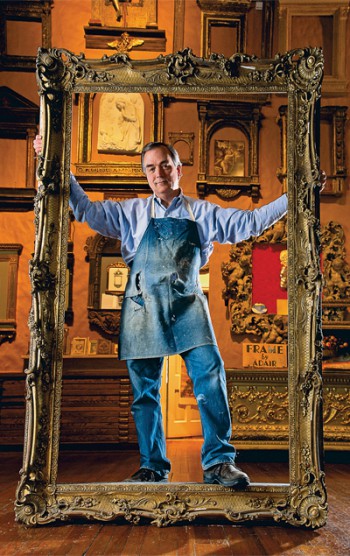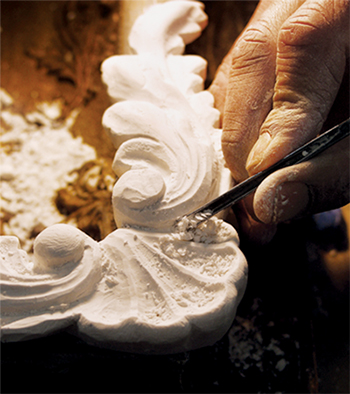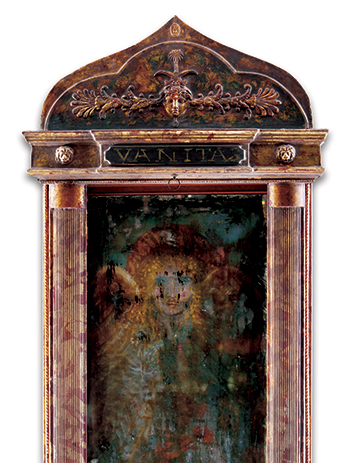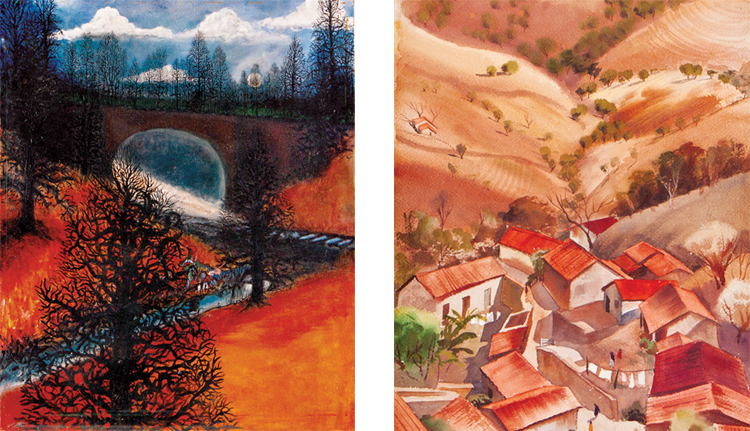Midas Touch

Photo: Ron Blunt
“I got my first ‘A’ in art in high school, and that was an indication to me that someone—one of my teachers—thought that I was exceptional …. So [I began my art career] at Montgomery College,” said Adair.
He started off with advertising art, studying with “some really good teachers” who steered him in the right direction. “Allan Marsh was an art history teacher and artist who talked about materials and techniques and the ancient Renaissance world that I knew nothing about,” Adair recalled.
“Joan Rosenstein, my design teacher, tried to get me on course in terms of thinking about art as a career. And then Blaine Larson-Crowther, my drawing teacher, taught me that the most important thing an artist can do is to draw—constantly draw—so I adopted that as my daily routine.”
Adair transferred to the University of Maryland, where he “launched into [art] as a serious endeavor—as a choice of what I wanted to do with my life.”
Adair pays homage to his mentors in “Reflections: Mentor and Protégé,” an exhibit at the Cultural Arts Center gallery on the Takoma Park/Silver Spring Campus. The exhibit, which continues through December 16, is a major retrospective of his art. It also features the work of several mentors, including Montgomery College art professors Rosenstein and Ellen Gelman.

Adair uses traditional techniques and materials for handmade gilded objects. Photo courtesy Gold Leaf Studios.
Niese first introduced Adair to gold leaf, but it was as an apprentice to master artisan Oliver Anderson at the Smithsonian’s National Portrait Gallery that Adair learned the foundation skills for his lifetime obsession. In 1975 he received a grant from the Smithsonian to travel to Europe and learn about tools and techniques from the few remaining master gilders working in the Renaissance tradition. After 10 years at the National Portrait Gallery, Adair founded Gold Leaf Studios in 1982, a Washington, D.C. gilding, conservation, and framing workshop with an extensive antique frame collection spanning centuries of Western tradition. Over the years, the studio has completed architectural gilding projects in such prestigious buildings as the U.S. Treasury, the Metropolitan Club, St. John’s Church on Lafayette Square, and the U.S. Department of State diplomatic reception rooms.

William Adair, Vanitas Futilitumas , mirror, oil
and canvas, 66 x 35 in., 1991
Today Adair conducts gilding workshops nationwide, lectures, and writes about frame history and conservation. He is founding director of the International Institute for Frame Study, and a founding member of the Society of Gilders.
Throughout his career, he has never lost contact with his mentors: “I went back to my teachers constantly. I was never out of their reach. And I continually use them as sounding boards, as my friends, and as my mentors.”
—Tina Kramer
Reflections: Mentor and Protégé

William Adair (left) stretching a canvas with his mentor, Henry Niese. Photo by Charlie Sleichter.
The exhibit focuses on three different areas: how the relationship between mentor and student affects artwork, how a painting framed in different ways affects the viewer’s perceptions, and how the mirror is the framer’s purest art form. Examples of Adair’s gilding are also on display.
As part of the exhibit, Adair presented a lecture on gilding, as well as a master gilding workshop for Montgomery College art professors who wanted to incorporate this skill into their courses.

Left: William Adair, The Trestle, oil on canvas, 30 x 24 in., 1973
Right: Mitchell Jamieson, Mexico, watercolor, 19.75 x 14.5 in., 1940
This article first appeared in the fall 2011 issue of Insights.


